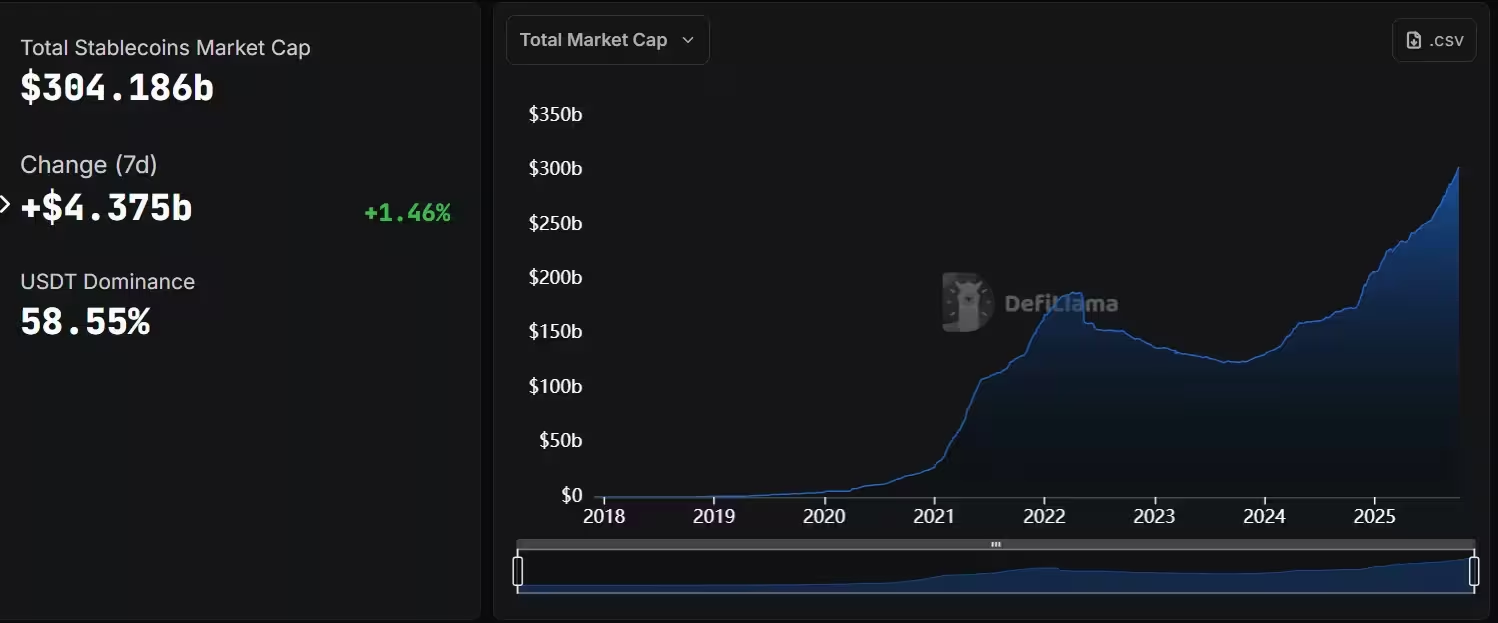4 Minutes
JPMorgan projects $1.4T boost to U.S. dollar from stablecoins
Analysts outline dollar demand scenario
Analysts at JPMorgan estimate that growing stablecoin adoption could create at least $1.4 trillion in additional demand for the U.S. dollar by 2027. The bank’s outlook is grounded in the current market composition: more than 90% of stablecoin market capitalization is dollar-pegged, and dominant tokens such as Tether’s USDT account for nearly 60% of supply. Rather than displacing fiat currency, these dollar-pegged tokens could increase global demand for dollars as they are used for transactions, trading, and cross-border investments.
Why dollar-pegged tokens matter
Stablecoins are mostly backed by dollar assets
JPMorgan highlights that many stablecoins are backed directly by U.S. dollars or dollar-denominated assets such as U.S. treasuries and bonds. When overseas investors and institutions convert local currency into dollar-backed tokens, that process effectively increases demand for the U.S. dollar or its equivalents. The bank notes that approximately 99% of stablecoin supply is pegged 1:1 to the dollar, so market growth naturally implies additional dollar demand.

The stablecoin market is projected to reach $2 trillion in the next two years
Market scale and recent growth
Rapid expansion in market capitalization
Data from market trackers show that the stablecoin sector has grown from roughly $4 billion five years ago to over $300 billion today. In 2025 alone, the market added roughly $100 billion as institutional and retail investors increased exposure to tokenized cash-like instruments. CoinGecko figures indicate USD tokens constitute more than $300 billion of the $304 billion market cap, underscoring dollar dominance in the stablecoin ecosystem.
Major players and market concentration
Tether’s USDT remains the largest issuer by market share, contributing nearly 60% of the total stablecoin market capitalization. Other dollar-pegged tokens, including issuers that back reserves with treasuries or cash equivalents, have reinforced the dollar’s central role in crypto markets. Efforts to diversify peg bases—such as euro-pegged EURC or ruble-pegged tokens—have not yet dented USD dominance.
Drivers behind the forecast
Use cases, cross-border flows, and tokenization
JPMorgan points to several structural drivers that could accelerate stablecoin adoption and dollar demand: faster cross-border settlement, increased use of crypto rails for institutional treasury operations, and tokenization of traditional assets. As companies and investors choose dollar-pegged stablecoins for speed and liquidity, conversion from local currencies into dollar-equivalent tokens can translate into cumulative dollar inflows.
Regulation and institutional acceptance
The push for clearer regulatory frameworks has also been pivotal. Legislative and policy moves—such as U.S. proposals to formalize stablecoin rules, Hong Kong’s Stablecoin Ordinance, and bank-driven initiatives in the EU to issue euro-backed tokens—have reduced legal uncertainty and encouraged issuers and banks to enter the market. JPMorgan notes that regulatory clarity, when combined with scalable technology and institutional interest, could underpin the scenario where stablecoins drive meaningful incremental demand for the dollar.
Outlook and caveats
JPMorgan qualifies its projection as a scenario rather than a certainty. While the $1.4 trillion figure represents a plausible path if adoption accelerates as projected, many variables remain: regulatory outcomes, competition from non-dollar pegs, macroeconomic conditions, and improvements in on- and off-ramps for fiat-token conversions. If those factors align, stablecoin-related dollar inflows could become cumulatively significant by 2027.
For crypto investors, policymakers, and treasury managers, the bank’s assessment underscores a key takeaway: dollar-pegged stablecoins are not just a crypto-native payment rail—they are increasingly intertwined with global dollar liquidity and demand.
Source: crypto


Leave a Comment